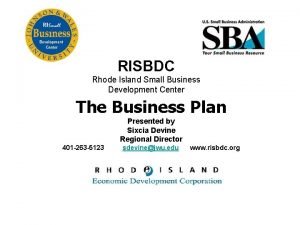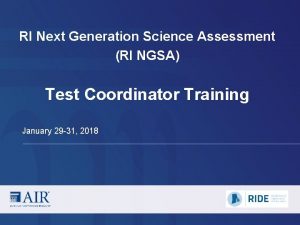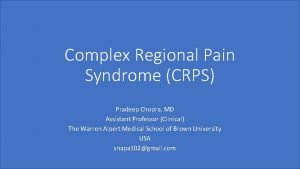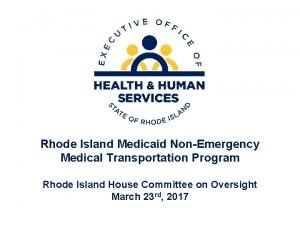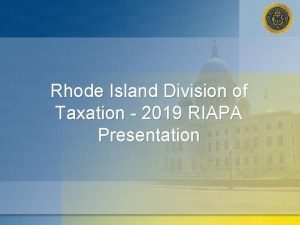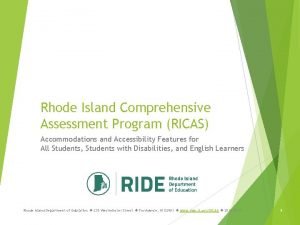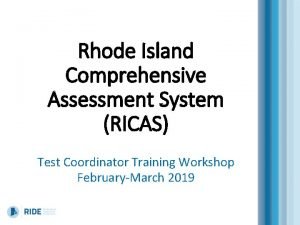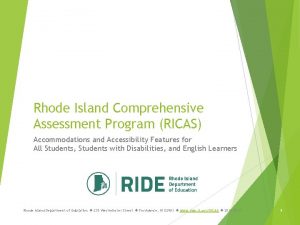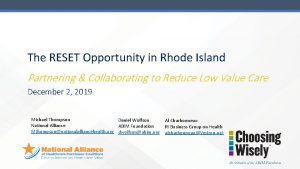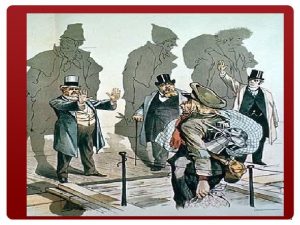Opportunity Youth in Rhode Island Providing Engaging Learning












- Slides: 12

Opportunity Youth in Rhode Island Providing Engaging Learning Experiences for All Rhode Island Youth

Agenda • Background: Creating Pathways for all students • Defining Opportunity Youth • Data on Rhode Island’s Opportunity Youth • Small Group Discussion on Barriers and Best Practices • Whole Group Share Out & Discussion • Looking Ahead: Next Steps & Closing

Background • Creating pathways for all students. • In 2016 RIDE and GWB began developing strategies for K-12 youth. • In 2017 RIDE was awarded the NSFY award to implement those strategies. • In 2018 the Office of the Postsecondary Commissioner, URI, RIC, CCRI and AICU began work to focus on developing strategies for college students. • Missing: A comprehensive approach to better preparing disengaged youth for a career.

Defining Opportunity Youth • Proposed Definition: Youth ages 16 -24 who are not in school and are unemployed, including those who are completely and partially disconnected. • Completely disconnected • K-12 dropouts who are unemployed • Young adults with no high school degree AND are unemployed • Young adults who have a high school degree AND are unemployed AND are not in postsecondary education • Partially disconnected • K-12 enrolled who are not attending class regularly AND are not progressing • Young adults who are either enrolled in postsecondary education part-time OR are underemployed

Data on Rhode Island’s Opportunity Youth • We have partnered with Data. Spark at the University of Rhode Island to create a comprehensive picture of Rhode Island’s opportunity youth • Data will be collected from multiple sources: • Publicly-available data from the American Community Survey and Youth Risk Behavior survey for a “landscape” view of opportunity youth • Linked individual-level data from the RI Data. HUB for a more granular view • Data collection and analysis are still in progress but we have some initial findings to share

RI Disconnected Young Adults at Age 24 • For the purposes of this exercise, a disconnected young adult is an individual at age 24 who: a) went through the RI K-12 education system; and b) are unemployed; or c) are underemployed, as defined by making less than the federal poverty limit during their 24 th year • Used RIDE K 12 data as well as a wage record and unemployment claim data to produce an analytic sample of 19, 271 individuals who were 24 years old between 2010 -2017

Rhode Island Disconnected Young Adults at Age 24 34% HS Graduate, Part-Time Post Secondary w/ No Degree 20% HS Graduate, No Post Secondary HS Dropout 10%

Other Key Findings: RI Disconnected Young Adults at Age 24 • High school dropouts and high school graduates with no postsecondary enrollment are disproportionately male • 24 year olds who had graduated high school but had not enrolled in postsecondary education were less likely to have grown up in one of Rhode Island’s core cities; only about 30% lived in a core city during K-12 • Of the K-12 dropouts who were still disconnected at age 24 in 2017: • 83% were ever on Free or Reduced lunch • 38% had an IEP • 10% were ELLs • 9% had been in foster care as children

Small Group Discussion: Barriers & Best Practices • Split into two groups; record discussion to share out to whole group • 10 min: Barriers Discussion • What are the barriers facing opportunity youth? • What are some challenges in serving opportunity youth? • 10 min: Best Practices Discussion • What is going well in serving opportunity youth? • What are some best practices you can share?

Whole Group Share Out & Discussion • Share out the 3 biggest barriers and 3 best practices your small group discussed • Whole Group Discussion: • Anything else that should be highlighted in this discussion? • Who are we missing? What other stakeholders should be engaged with this issue? • RI Opp Youth Data: What resonated with you? What needs to be explored further?

Looking Ahead Goal: Develop a plan for re-engaging Rhode Island’s opportunity youth to education and employment. To be accomplished: • Continue exploring and analyzing data on opportunity youth • Developing targeted strategies for engaging populations • Setting goals and developing a multi-year plan with annual benchmarks Next Steps: • Continue the conversation and engage stakeholders

Closing Thank you for your participation today! Additional questions can be directed to: Heather Hudson Executive Director, Governor’s Workforce Board Heather. w. hudson@dlt. ri. gov Cara Harrison Policy Analyst, Governor’s Office Cara. harrison@governor. ri. gov
 Ri small business development center
Ri small business development center Ride ngsa
Ride ngsa Rhode island board of governors for higher education
Rhode island board of governors for higher education Interesting facts rhode island
Interesting facts rhode island Pradeep chopra md
Pradeep chopra md Galinha rhode island red
Galinha rhode island red Medical transportation ri
Medical transportation ri Rhode island
Rhode island Rhode island environmental police
Rhode island environmental police Rhode island
Rhode island Stem cell treatment rhode island
Stem cell treatment rhode island Ricas pearson access next
Ricas pearson access next Ricas math reference sheet
Ricas math reference sheet
